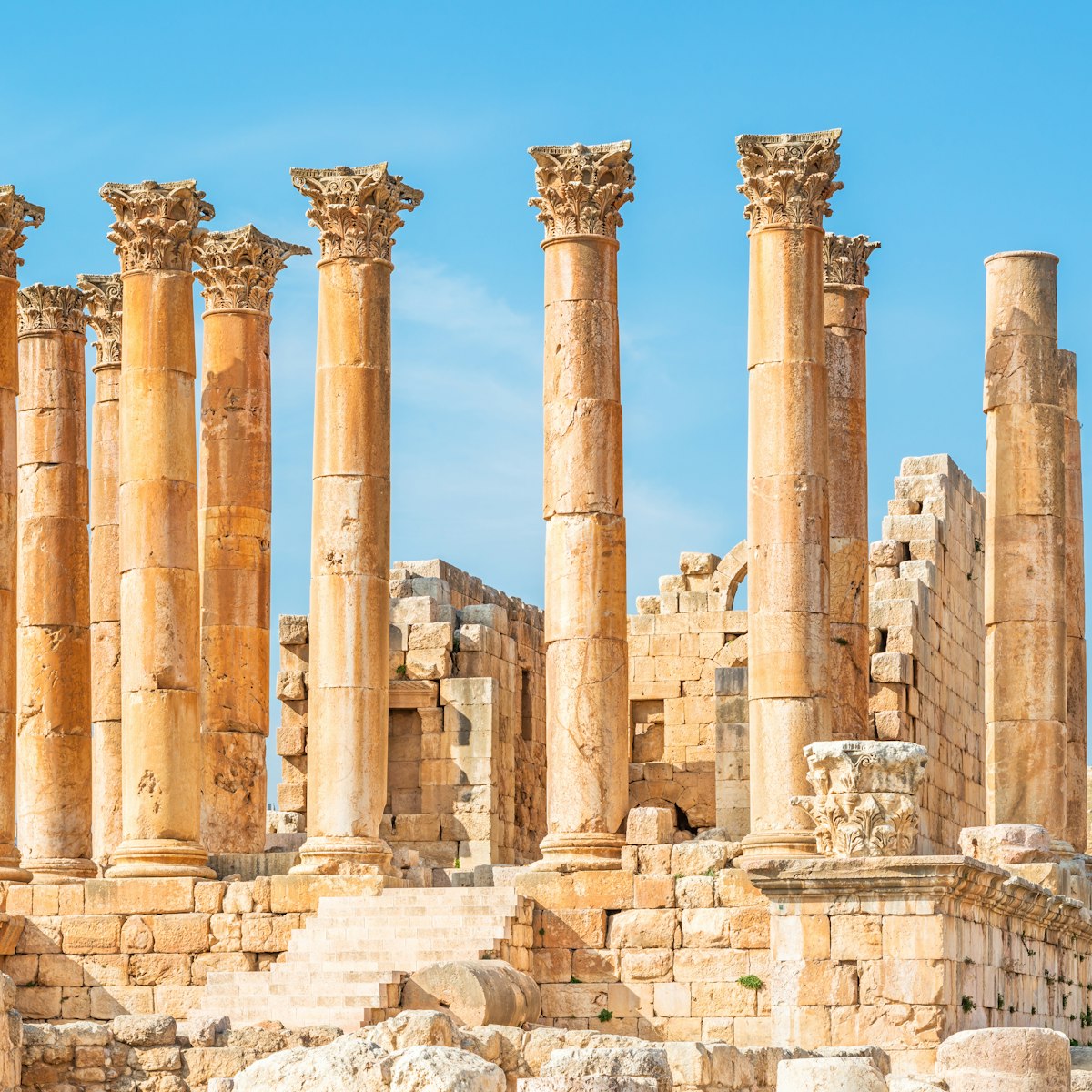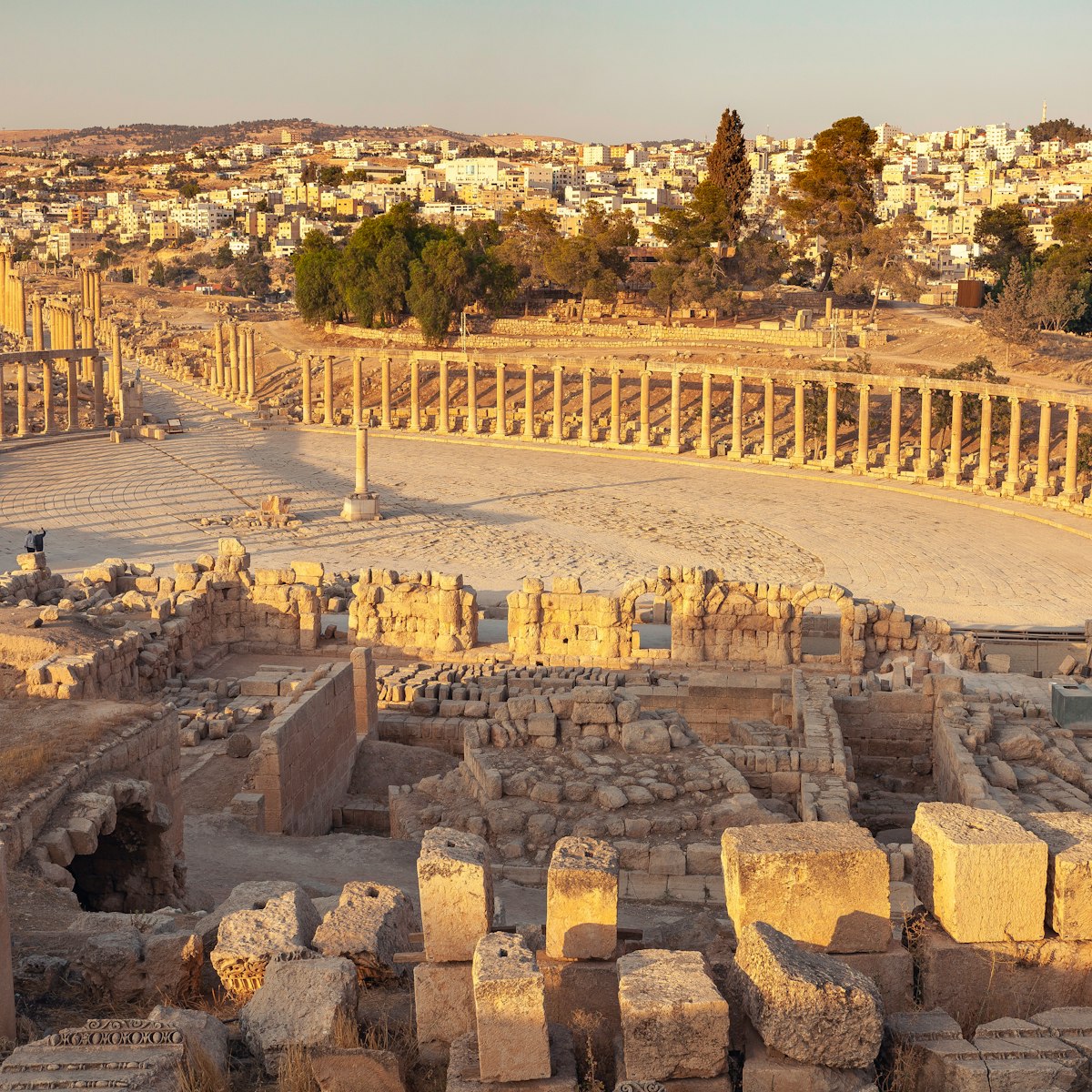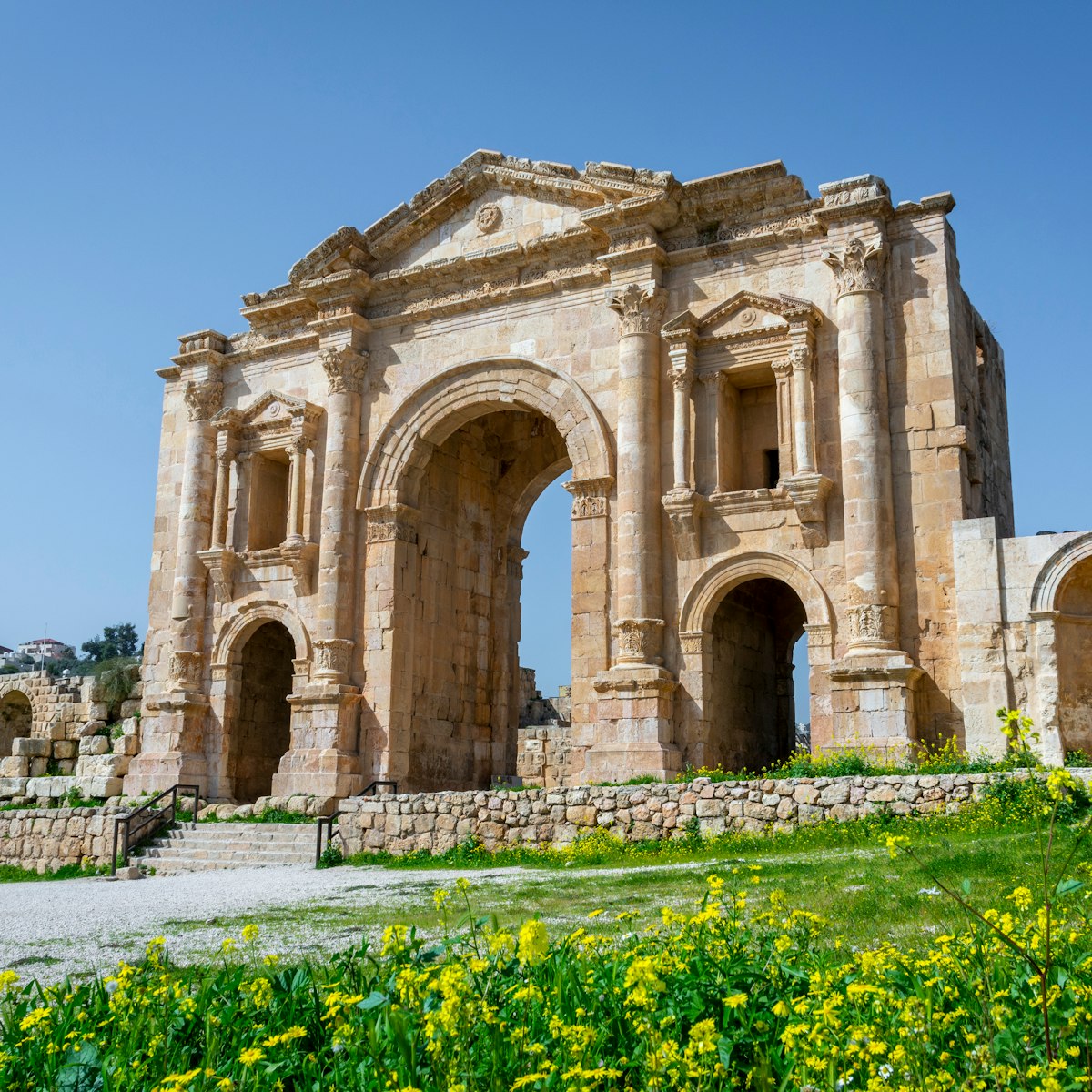This little-visited archaeological site, believed to be the birthplace of the prophet Elijah, gives you just the excuse you need to explore the countryside around Ajloun. To be honest, it’s not a spectacular site by any stretch of the imagination, though it's worth visiting for its religious and historical significance.
Elijah (also known as Elias) is mentioned in both the Quran and the Old Testament, and is thought to have been born around 910 BC in the village of Lesteb, next to Mar Elias. The prophet is said to have died not far away in Wadi Al Kharrar, before supposedly ascending to heaven on a flaming chariot. During Byzantine times, a pilgrimage site grew up around Mar Elias under the guidance of the nearby Bishopric of Pella. In 1999 excavations unearthed a church complex dating to the early 7th century.
From the car park, stairs lead up above the ruins of the earliest church, the apse of which has a tree growing directly above it. The foundations of the main cross-shaped church are easy to make out and are decorated with wonderfully fresh floor mosaics. Look for the tomb chambers to the back right of the church and an earlier chapel with plain white tiles to the south. Water cisterns and bits of masonry dot the rest of the site.
There’s no public transport to Mar Elias. From Ajloun, take a right by the Qalet Al Jabal Hotel, climb the hill for 1km and take a left at the junction, heading downhill after this for 2.7km. At the junction/army post take a right and continue another 2km until you see a signpost pointing left (the right branch leads to Ishfateena and the Ajloun Forest Reserve). After 1km, take the paved track on the left and continue 400m up to the site (a total of 8.5km from Ajloun).
If you’re heading on to Ajloun Forest Reserve, take a left when you get back to the junction, 1.4km from the site, and head towards Ishfateena. After 1.6km you’ll reach the main road; take a right here and after 5km the reserve is signposted to the left, 300m before the main Irbid–Ajloun highway.
Mar Elias can also be reached on foot along the spectacular Prophet’s Trail, which connects the site to Ajloun Forest Reserve.







